The week at a glance
- Pallid Harrier in Cornwall
- Black-throated Thrush still in North Yorkshire, plus several belated reports elsewhere
- Probable American Bittern in Lancashire
- Potential Black-eared Kite still in Powys
- American Eider still in County Donegal
The cold, snowy grip of winter was relaxed this week, as temperatures finally climbed well above freezing. Much of the lingering ice and snow became shallow grey pools and grubby roadside patches as rain and southerly winds swept in across most of Britain and Ireland. There were further falls of snow, but on the whole, things were improving. Heck — even the sun came out!
There were plenty of things to bring a little avian ray of sunshine into birders' lives as well this week. The impressive juvenile Pallid Harrier lingered at the far west end of Cornwall until 15th, with probable sightings on 17th and 18th suggesting it may still be in the area. Up in North Yorkshire, the delightfully obliging female Black-throated Thrush behaved impeccably around the gardens of Newholm near Whitby to 20th at least. These gorgeous thrushes never fail to impress and many folk went home happy; and all credit to the householders for posting their excellent images to the world last week. It just goes to show what's lurking out there: it seems as though the month's third Black-throated Thrush was seen briefly on 11th but not subsequently (a male at Potteric Carr, South Yorkshire), and as the week continued news emerged of a fourth (another brief male at Kilve, Somerset, on 8th) and a fifth (a female in a Beaconsfield (Bucks) garden on 12th).

Black-throated Thrush, Newholm, North Yorkshire (Photo: Graham Catley)
In Lancashire, a one-observer probable American Bittern was seen briefly at Marton Mere on the evening of 16th. Seen for a few seconds near the local bird club hide, it was seen alongside a regular Eurasian Bittern (Great Bittern or plain old Bittern if you'd rather) and noted to be smaller, with plain, dark primaries. Intriguing stuff and even more so when those of a certain age take themselves back to the very same site, in the early winter of 1991, when hundreds of birders enjoyed the last twitchable British American Bittern. A four-day spring bird in Cornwall in 1999 was suppressed and the most recent accepted arrival was the corpse found in west Wales in November 2008. If the 2010 Marton Mere bird firms up, there'll be quite a crowd of eager twitching beavers on site in a flash.
In Powys, the wintering juvenile Black Kite or possible Black-eared Kite remained at the Gigrin Farm feeding station from 14th–19th at least, the identification debate around the bird still ongoing (as was the discussion as to the bird's origins, wild or otherwise). Less problematic was the Western Palearctic's first super-handsome drake American Eider that continued to draw a handful of admirers to Fanad Head (Co. Donegal) over the weekend.
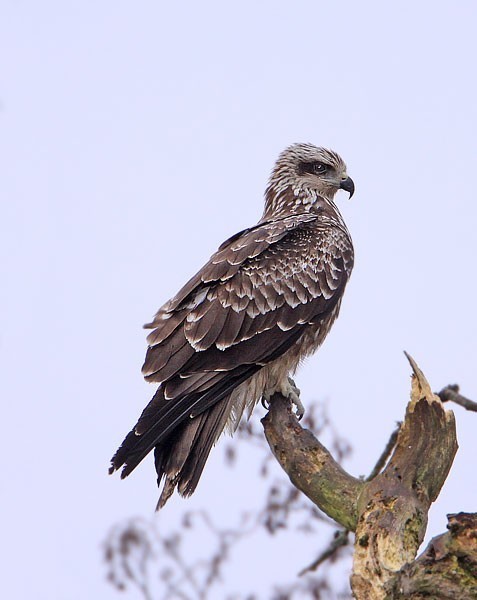
Black Kite, Gigrin Farm, Powys (Photo: Gary Thoburn)
Out at sea, six Balearic Shearwaters flew past Porthgwarra (Cornwall) on 14th, with further ones and twos around southwestern coasts later in the week. In Aberdeenshire, a Grey Phalarope was off the pier at Peterhead on 16th with another off Ruddon's Point (Fife) on 17th and one on the beach at Gibraltar Point (Lincs) on 20th. Sixteen Little Auks flew past Sumburgh Head (Shetland) on the morning of 14th. A probable White-billed Diver was seen off Bamburgh (Northumberland) on 18th.
In Somerset, the three Glossy Ibis remained at Catcott Lows to 20th at least. The same county was also still playing host to one of the week's dozen or more Great White Egrets (still present on Shapwick Heath), with two birds seen together near Harbridge (Hampshire) from 17th–20th and two again at Pitsford Reservoir (Northamptonshire). Singles were in Aberdeenshire (two sites), Cheshire, Cambridgeshire, Glamorgan, Kent (two sites), Lancashire, Staffordshire and Surrey. Two Cattle Egrets remained in the Brew Farm area near Sennen (Cornwall) and a single bird was seen in Wales, at Llanfarian (Ceredigion) on 16th. Late news emerged of a single in Bridport (Dorset) on 13th; the bird was relocated at nearby Chideock on 19th–20th at least.

Cattle Egret, Brew Pool, Cornwall (Photo: Samuel Williams)
At least 20 Spoonbills were noted this week, mainly in the southwest of England, including two birds still wintering on Scilly, seen near Samson on 14th, and up to 10 birds around Devon. A young Common Crane was seen on Penhill Marsh (Devon) on 15th, and on 16th the evening roost count at Stubb Mill (Norfolk) was of at least 19 birds. Five birds were seen at Lakenheath RSPB (Suffolk) on 17th and two were at March Farmers (Cambridgeshire) on 19th. A sub-adult Night Heron appeared at Bubwith Ings (East Yorkshire) on 18th.

Spoonbill, Colyford Common LNR, Devon (Photo: Karen Woolley)
The blue Snow Goose was still around Donegal's Big Isle on 14th–17th and the white adult remained at Craobh Haven (Argyll) to 17th. In Norfolk, the Snow Goose was again around the north-coast roosts to 20th, and in Lancashire, the four white Snows remained at Aldcliffe for much of the week, presumably the same group that relocated to Leighton Moss from 17th. Pride of place, though, goes to Loch of Strathbeg, where three birds (two blue, one white) were seen on 17th.

Snow Goose, Craobh Haven, Argyll (Photo: Jim Dickson)
The presumed Todd's Canada Goose (of unknown origin) was still visiting Rushy Pen, Slimbridge (Gloucestershire) from 14th–20th, while on Islay a Richardson's Canada Goose was still being seen at Loch Gruinart. Regular single Black Brants remained in Norfolk, West Sussex, Hampshire and Dorset. New birds were noted at Reculver (Kent) on 16th–17th and Old Hall Marshes (Essex) on 17th, and on Wallasea Island in the same county on 19th. In Devon, the Red-breasted Goose was on the Exe Estuary on 17th.
Twelve drake Green-winged Teal were seen this week: five in England (in Somerset, Hampshire, Leicestershire, Norfolk and Warwickshire), two in Scotland (Perth & Kinross and the Outer Hebrides), one in Wales (on Anglesey) and four in Ireland (in Wexford, Waterford, Clare and Donegal). At Caerlaverock (Dumfries & Galloway) the drake American Wigeon was seen again on 17th, with possibly the same bird appearing at Castle Loch on 18th.
The drake Lesser Scaup was still in the Cardiff Bay Wetlands (Glamorgan) on 15th–18th, and one was still on La Grande Mere (Guernsey) to 16th at least. In Cornwall, the drake Ring-necked Duck was still on Porth Reservoir to 20th and the drake at Pugney's CP (West Yorkshire) settled down again, to 21st at least. In Sligo, the third drake of the week was on Lough Arrow on 14th and the fourth (another drake) remained on Inch Island Lake (Co. Donegal). The only female was seen on North Ronaldsay (Orkney) on 18th — one was there in mid-December too.

Ring-necked Duck, Pugney's CP, West Yorkshire (Photo: Jason Stannage)
There were four drake Ferruginous Ducks to report this week: regular birds from recent weeks remained at Craigavon Balancing Lakes (Co. Armagh), Barton Broad (Norfolk) and Brookleys Lake (Staffordshire), while in Somerset bird number four was on Westhay Moor on 16th.
A drake Surf Scoter was still off Ruddon's Point (Fife) this week and the female remained off Dawlish Warren (Devon). The drake King Eider was still sitting pretty offshore at Burghead (Moray) to 18th, and in Cleveland the female Hooded Merganser (of unknown origin) was on Saltholme Pools on 16th–18th (and the drake was still residing in Dorset too).

King Eider, Burghead, Moray & Nairn (Photo: Bryan Rains)
A Gyrfalcon was seen near Portnahaven, Islay (Argyll) on 16th–17th and the following day saw the white Gyr appear again in Sligo, near Ballyconnell (where is that living?). In Norfolk, the Rough-legged Buzzard was still on Haddiscoe Marshes this week, seen again on 15th and 17th. A possible was reported from Ramsholt (Suffolk) on 17th, with other reports coming in from Sleddale (Cleveland) on 18th, Saltfleetby (Lincs) on 18th and Horsey (Norfolk) on 19th.
The week's only shorebird of note was the Spotted Sandpiper that continued to perform at Topsham (Devon), still present on 18th.
On Anglesey, an adult Bonaparte's Gull was a decent find in Lligwy Bay on 14th and the bird continued to show, albeit only from time to time, until 18th. Another adult was seen in County Cork, at Cuskinny, on 17th. In Ireland, the adult American Herring Gull was still at Nimmo's Pier (Co. Galway this week), seen on 15th–18th, and a juvenile was eventually identified on Ross Beach, Cleggan, on 19th. The adult Forster's Tern remained faithful to the Nimmo's Pier area. Ireland continued to dominate where Ring-billed Gulls were concerned, with birds in Antrim, Cork, Donegal, Dublin, Galway, Kerry, Londonderry, Limerick and Sligo. In England, the usual suspects were still in Hampshire and Essex, while at Chew Valley Lake (Somerset) a first-winter was seen on 15th and an adult was seen again on 16th. The adult was again at Seaforth (Lancashire) on 17th and a first-winter was on the Hayle Estuary (Cornwall) on 18th. A second-winter at Ravensthorpe Reservoir on 19th was new in Northamptonshire. In Scotland, an adult was again at Oban and a first-winter was at Kinneil Lagoons (Forth).
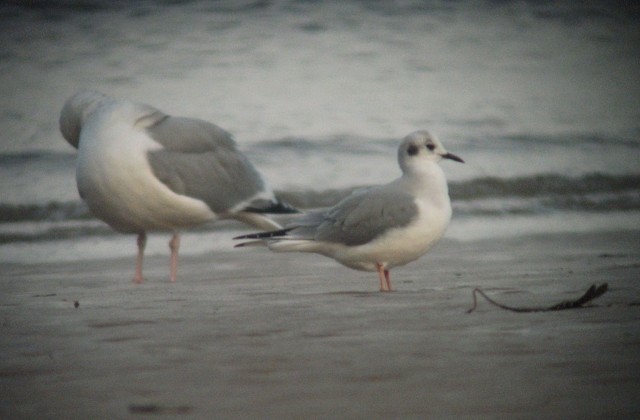
Bonaparte's Gull, Lligwy Bay, Anglesey (Photo: Steve Culley)
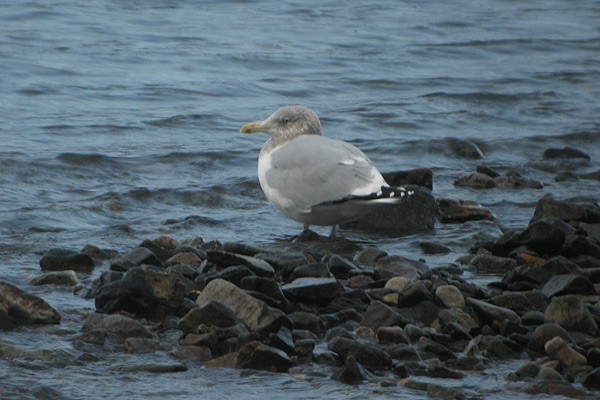
American Herring Gull, Nimmo's Pier, Galway (Photo: Tristan Reid)
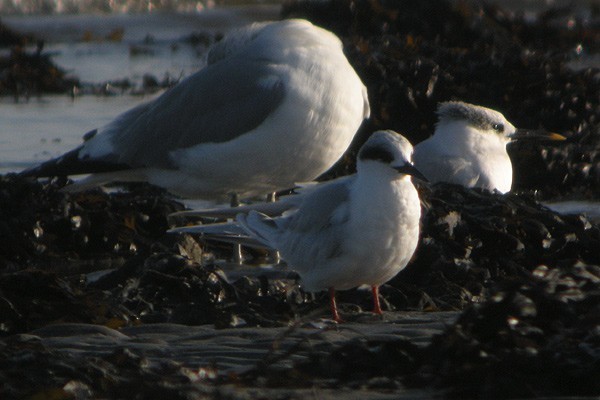
Forster's Tern, Galway, Galway (Photo: Tristan Reid)

Ring-billed Gull, Donegal, Donegal (Photo: Tristan Reid)
Iceland Gulls and Glaucous Gulls were rather thin on the ground, the latter species including two at Rainham Marshes (London) on 15th–20th. Around 20 Caspian Gulls were reported, with two different birds (a first-winter and an adult) seen during the week at Pegwell Bay in Kent and a first-winter at Prescot Reservoirs (Lancashire) on 16th. Amazing news, though, came from around the Vange Marsh area of Essex, where no fewer than 17 cachinnans have been seen recently, a truly remarkable figure (whether they were all in one go or in dribs and drabs!).

Iceland Gull, Nimmo's Pier, Galway (Photo: Tristan Reid)

Glaucous Gull, Slaughden, Suffolk (Photo: Jon Evans)
Only six Waxwings were seen during the week and they were outnumbered by seven Great Grey Shrikes, including a singing male still at Holmsley Inclosure (Hampshire), new birds at Bellever Forest (Devon) on 16th–20th and the Teifi Marshes (Pembrokeshire) on 18th–20th, and others still at Grandborough (Warwickshire), Thorne Moors (South Yorkshire), Cross Inn Forest (Ceredigion) and Pett Levels (East Sussex).

Great Grey Shrike, Grandborough, Warwickshire (Photo: Carl)
A couple of Serins continued to show at Rainham Marshes this week, a Penduline Tit was heard at Dungeness (Kent) on 18th and the wintering Little Bunting remained at Dunnet Bay (Highland), until 20th at least.
Photo of the Week

Common Kingfisher, Upton Warren NR, Worcestershire (Photo:
Karen Summers)
For obvious reasons, the Common Kingfisher is one of the most popular subjects for bird photographers. We've received well over a thousand photos of these exotic-looking birds and every week sees further top-notch images being added to the collection. It therefore takes a special image to stand out from the crowd. Frustratingly for bird photographers, the best-known and most spectacular behaviour of Kingfishers — diving for fish — is also the most difficult to photograph. The sheer speed of their near-vertical plunges means that advanced photographic techniques and skills are needed to have any chance of success. Even before a shutter release can be pressed, though, it's no mean feat to find an obliging subject in a suitable location with good lighting and a complementary background. Karen Summers achieved all this and more with her capture of one of the most stunning Kingfisher images we've ever seen. The combination of sharpness, contrasting colours and, above all, the wonderfully dynamic pose make this an outstanding and memorable image.
Other notable photos

Black Kite, Gigrin Farm, Powys (Photo:
Jim Almond)

European Bee-eater, Hungary (Photo:
Eduardo Balogh)

Green Woodpecker, Hartlebury, Worcestershire (Photo:
Mark Hancox)

Woodcock, Spital, Cheshire (Photo:
Steve Round)

Jackdaw, Mold, Clwyd (Photo:
Richard Steel)

Redwing, Laxfield, Suffolk (Photo:
Jon Evans)

Fieldfare, Wigan, Greater Manchester (Photo:
David Cookson)

Whooper Swan, Martin Mere WWT, Lancashire (Photo:
Andy Bate)

Barn Owl, undisclosed site, Norfolk (Photo:
Nigel Pye)

Coot, Linlithgow Loch, Lothian (Photo:
John Anderson)

European Stonechat, undisclosed site, Lancashire (Photo:
Brian Rafferty)

Sparrowhawk, Big Waters NR, Northumberland (Photo:
Keith Cochrane)

Bearded Tit, undisclosed site, Lincolnshire (Photo:
Dean Eades)

Nuthatch, New Forest, Hampshire (Photo:
Daniel Trim)

Black-necked Grebe, Levington Marina, Suffolk (Photo:
Carl Wright)

Bittern, Cosmeston Lakes CP, Glamorgan (Photo:
Craig)

White-throated Mountain-gem, Costa Rica (Photo:
Sean Johnston)
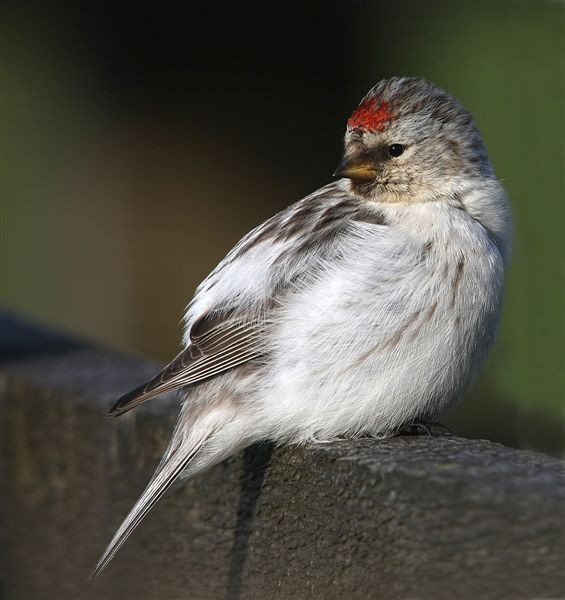
Arctic Redpoll, Norwick, Unst, Shetland (Photo:
James Wood)

Grey Heron, Upton Warren NR, Worcestershire (Photo:
Peter Walkden)

Little Egret, Leighton Moss RSPB, Lancashire (Photo:
Tom Gradwell)

